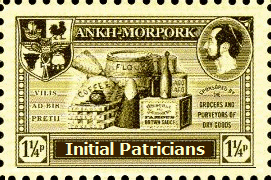|
The ‘Old with the Old’ LBE, the first to be issued in the Year of the Pensive Hare, is one of my personal favourites. Its name derives from the contents; each contained a number of older Discworld stamps, some dating back to the originals giving us a chance to fill those gaps in the collection with Bath and Wincanton perforated definitives. The sort of stock clearout I approve of.
Included, one in each LBE, was an Initial Patrician. Pre-empting the design change that was to be applied to the Penny Patrician definitive that year, the lower cartouches had a pair of letters, each of which combination was taken from the names of the subscribers to the Stanley Howler Stamp Journal. Philatelists may know that the Penny Black had corner letters based on the position of the stamp on the sheet. The top left stamp had A and A, while the bottom right stamp had T and L. Collectors and others like to find a Penny Black with their initials - providing, of course, that their initials lay within those constraints. The same desires applied to this Patrician. Initial pairings were offered in trades, helping the stamps find their way into the right collection.
There are said to be 120 to 150 pairings, these figures include those who subscribed to the Journal later resulting in a second printing of the stamps. There were a minimum of 3 stamps of each pairing and no more than 20. Most initial pairings were in numbers of 5 or more, but it all depended upon how many subscribers shared the same initials.
The original and later printings, when viewed next to each other, look noticeably different with a different colour shade and different shading behind the Patrician’s bust. A close-up look reveals why they look different.
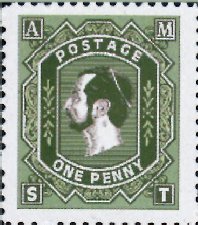 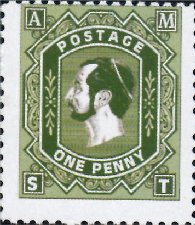
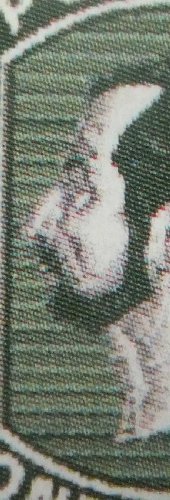 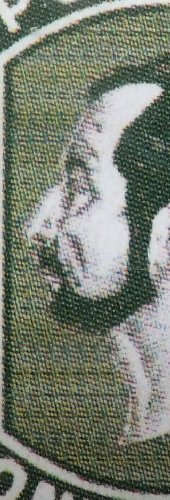
The first printing (I have to keep resisting the urge to refer to it as the initial printing) seems to have the boundaries between the light and dark more ragged and less defined. The banding on that stamp may be a print artifact or it may have been intentional. But the second print loses most of this and the improved print quality may have been applied to eliminate it.
There was a sport for this issue, with a Hare in the lower cartouches. The were 80 of these and no second prints. Ironically, if you count each combination of initials as being different - they are as different from each other as they are from the hare - the sport is actually typically 10 times more common than a regular stamp. Should the Hare stamp be classed as the common, and the initial stamps as the many many sports? One to discuss in the long winter evenings.
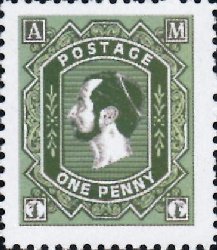
The design for this stamp (as well as the Penny Patrician definitive and, to a lesser extent, the Fifth Anniversary Patrician later in the year) was very very very much inspired by the 10 shilling GB stamp of 1865-1883. On DW you get the high value designs on the low value, every day postage stamps.
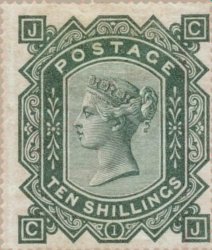
Actually this stamp may show how the differing backgrounds on the Initial Patrician may have come about. It concerns how a large scale high definition image is reduced to the size of a postage stamp. The reduction can be achieved by either a image processing program or by the program used to scale the images to a stamp sheet. If the scaling is achieved by treating the larger image as a bit map the averaging out of the horizontal lines and the spaces between can result in an uneven pattern, almost like an interference pattern. It all depends on the shading size and the degree of scaling. If treated as a vector based image this unwanted effect can be avoided, and the smaller details of the design are accurately averaged out. There will be loss of definition, but this would probably be lost during the print process anyway. Below are the original high-resolution design, the bit map reduction, and the vector based reduction, for comparison.
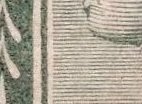 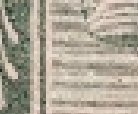 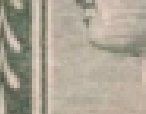
An imperforate sheet houses in the Discworld Stamps archive in the British Library shows that they were printed in unadorned sheets of 42 stamps. This would equate to just 3 or 4 sheets being required to provide all the estimate different letter combinations. Applying the other estimate of just 3-20 copies of each initial combination we find that only perhaps anywhere between 12 and 80 sheets being broken up and put in LBEs and distributed to collectors. Are your initials included on this sheet? Click to reveal a larger image.
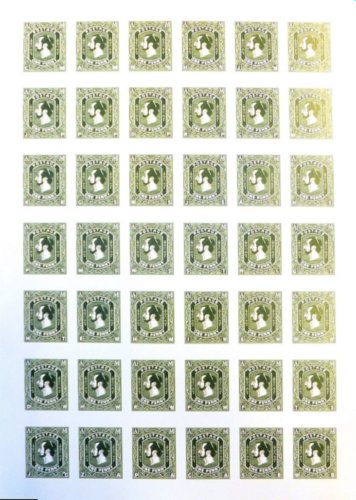
|


